In this lesson, you will learn tips and tricks for playing hot lead guitar solos. Playing lead guitar can be exhilarating if done correctly. Instead of focusing on chord shapes like you do in rhythm playing, you will focus on scale patterns and techniques associated with them.
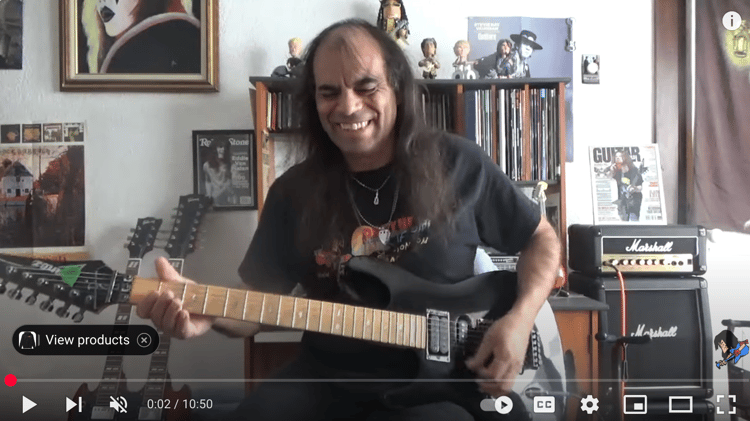
It is a single-note melody that you will be creating to play lead guitar. If you follow these tips, you will be well on your way to becoming an excellent lead guitar player.
#1: Be good at playing rhythm guitar
One thing that many guitar players who want to play guitar solos overlook is rhythm playing. Being good at playing rhythm guitar will make you good at playing lead guitar. The reason for this is that you play the solo over the chord progression in the rhythm section of the song.
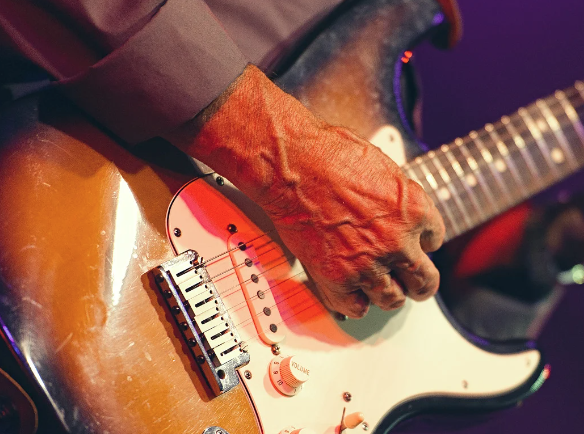
Since this is the case, you want to have a great understanding of the rhythm being produced. This will help you create a lead guitar part that will go with it. A lead guitar part that will harmonize with the rhythm guitar. The better you know the rhythm, the better you’ll create the lead part that goes with it.
#2: Start with the minor pentatonic scale
The best place to start when it comes to playing guitar solos is the minor pentatonic scale. It is very popular and works with all kinds of chord progressions in both minor and major keys. Also, the way it is shaped across the fretboard makes it easy to play and remember.
The minor pentatonic scale
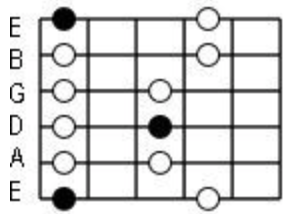
Here is an example of the minor pentatonic scale. As you can see from the diagram above, it covers all six strings and can be played at any fret. The reason why it is called the minor pentatonic is that it uses certain notes from the minor scale it comes out of.
Pentatonic means 5 notes. A scale of five notes. The notes used in this scale are the 1st, b3rd, 4th, 5th, and b7th notes. Below is an example in the key of A minor. The key has 7 notes, and we take 5 specific notes out of it to create the minor pentatonic scale.
Key of A minor: A B C D E F G = 1 b3 4 5 b6 b7
A minor pentatonic: A C D E G = 1 b3 4 5 b7
If you take the time to study this diagram and practice this scale, you will be well on your way to becoming a great lead guitar player. I recommend you study the diagram and be able to pay it back and forth. Once you can do that, you then work at playing it in different locations up and down the fretboard.
Watch The Video Lesson Below
#3: Work on phrasing
This is how you make the scale that I recommended sound like music. It is not enough to learn the scale, or any scale for that matter. Going through guitar scales is just step one. It is a good introduction to lead guitar playing, but you must progress further. You must learn personality traits.
These are things such as hammer-ons, pull-offs, string bends, slides, vibrato, etc. It is these techniques and more like them that are going to make your guitar scales sound like you hear them in songs. Hammer-ons are where you pick a note and hammer on to the next. A very popular technique in lead guitar playing.
Hammer-on

Pull-offs are the same as hammer-ons but in reverse. You put 2 fingers down on the same string, and pull off a note to the one behind it. A hammer-on adds a note, and a pull-off takes one away.
Pull-off
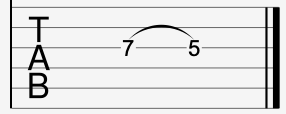
String slides are another great way to express the notes. These can be done by picking a note and sliding up to the next one, or picking a note and sliding down to the next one.
Slide up and down
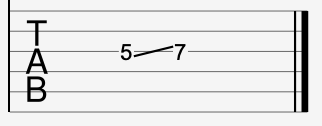
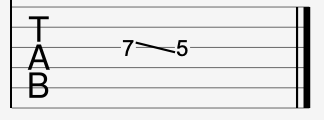
You put these and a few other techniques together, and you have what's called phrasing. This is where you sing with your guitar. Where you get the scales to sound like music, that is pleasant to the ear.
Phrasing

In this example. We add a string bend on the 7th fret of the 3rd string (in guitar tabs, the strings are upside down), and we add a vibrato at the end of the 7th fret 4th string.
I recommend that you work on these techniques and get familiar with them. There are many more, but these are a great way to get started. Work with them individually and then work with them collectively. This, will allow you to get familiar with them.
As you do, your ear will begin to recognize them in songs. They will build your foundation for playing lead guitar solos and fuel your creativity. Along with that, you will enhance your overall musicianship.
#4: Practice with a metronome
This is a technique that can make a huge difference in your lead guitar playing. It allows you to build timing, increase your speed, reduce the tendency to rush, and allow you a sense of progress when practicing. All this and more can be achieved by working with a metronome.
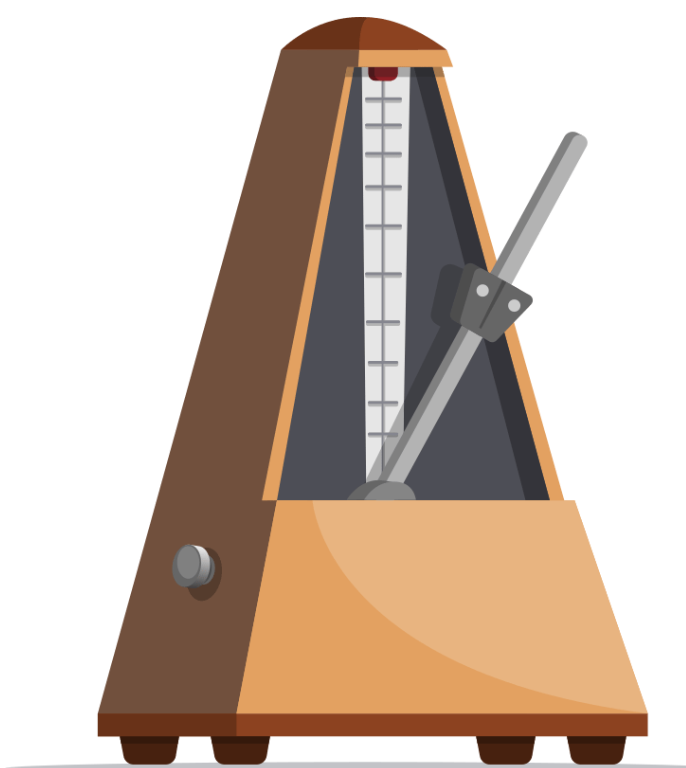
I highly recommend you get a good-quality metronome and begin working with it. Set the click to about 100. Go through the minor pentatonic scale and match each note to the click. Once you can do this, you then play two notes per click, then three, and so forth.
You then increase the speed slightly and repeat the process. If you do this diligently, you will begin to see progress in your lead guitar playing. Your timing will improve as well, along with the skills mentioned above. This will motivate you to practice daily.
#5: Use backing tracks
Once you get familiar with the techniques associated with this lesson, you will start to create small pieces of music that begin to sound like guitar solos. Once this begins to happen, I recommend that you work with backing tracks.
Backing tracks are pre-selected chord progressions that you can practice soloing over. These can be found on the internet, or you can choose to create your own. No matter how you choose to do it, this is an integral part of lead guitar playing and not a technique you want to overlook.
#6: Work on these tips daily
Only through determination and commitment to daily practice will you benefit from what I have taught you here.
Make sure you are good at playing rhythm. The better you know chords and chord progressions, the easier it will be to solo over them. Learn the minor pentatonic scale. Make sure you can play it at different locations on the fretboard.
Master your personality traits. Hammer-ons, pull-offs, string bends, etc. It is these techniques that make the scale sound like music. They will also provide ear training. Get a metronome or work with one online to help develop your timing. Use backing tracks for improvisation development.
#7: Take it step-by-step
A great way to learn all these concepts taught in this lesson is through a method book. The reason is that this approach offers lessons step-by-step. This allows you to learn in the best order without gaps in your learning. The lessons build upon themselves, and you get the most value for your time. Plus, you get to learn when is best for you and your schedule.
It's like having a teacher whenever you need. In the morning, in the evening, on the weekends, whatever works for you and your schedule. And since it, a book, it can be taken with you anywhere. This is how I learned many years ago, before the internet, and that is why I author guitar method books. Because I know this approach works. For this particular lesson, I recommend checking out Learn To Play Lead Guitar.
Learn To Play Lead Guitar
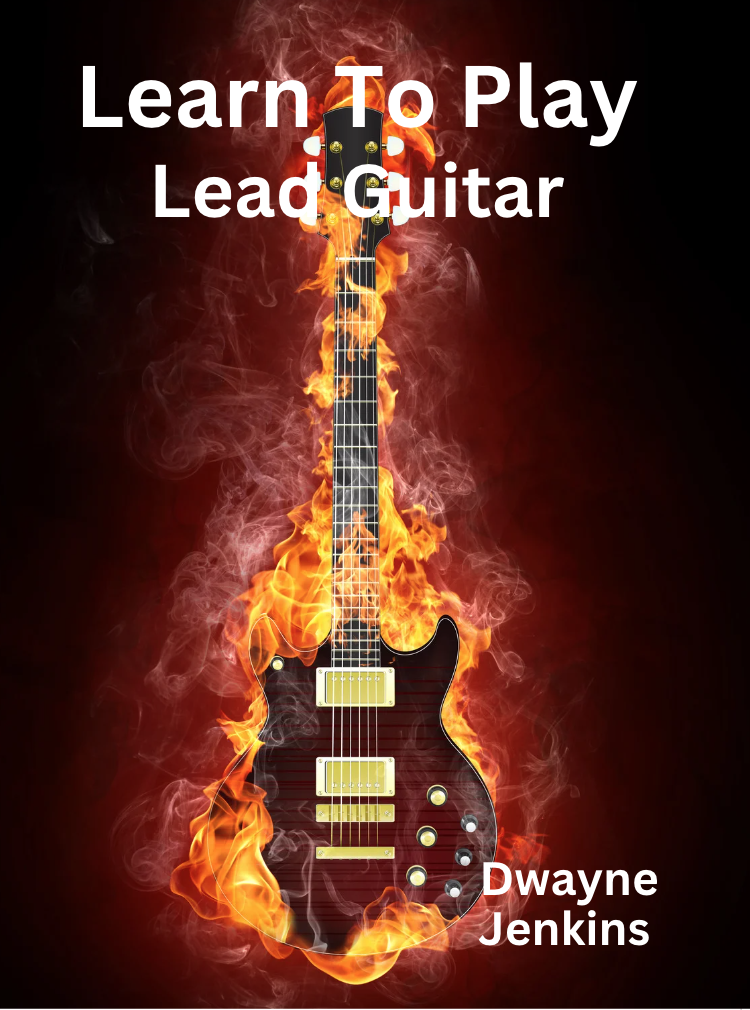
This book will teach everything you need to know to become a "great" lead guitar player. It will show you how to take your guitar playing from rhythm to lead. All the scales, guitar licks, phrasing patterns, notation, theory, and much, much more. All in a system that anyone can easily learn from.
If you've been playing guitar for a while and have the basics down. Or you're good at rhythm playing and want to try out lead playing, this book will get you there. With a disciplined commitment to steady and daily practice, you'll be playing "Hot Rodded guitar solos" in no time. Just grab the book and get started.
#8: Private instruction is also available
In addition to authoring method books (which is a great way to learn), I also offer private guitar instruction. Customized lessons that cater to your interests and skill level. They provide quick results, access to years of experience, and can make learning to play the guitar a lot more enjoyable. If you feel this option might work for you, contact me at my website, and we'll set up a time to talk on the phone.
Thanks for reading, and best of luck.
Until our next lesson, take care.
Sincerely, Dwayne Jenkins


